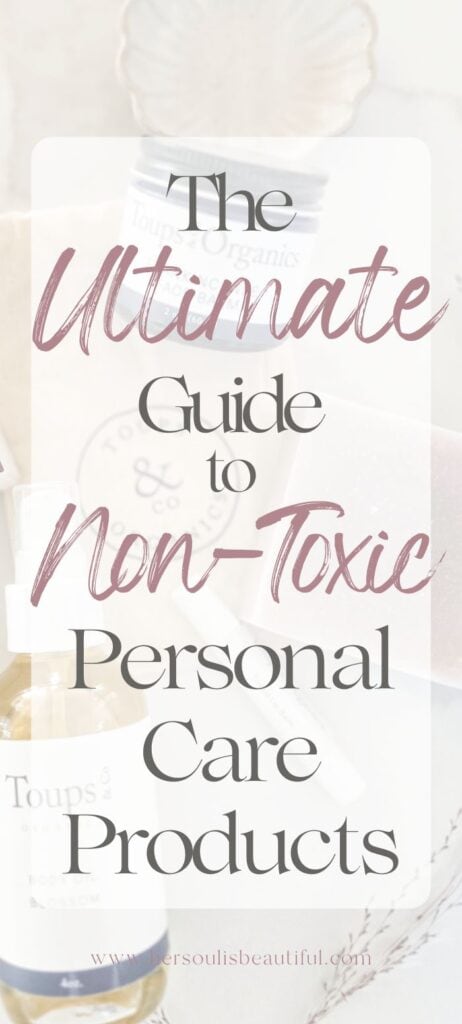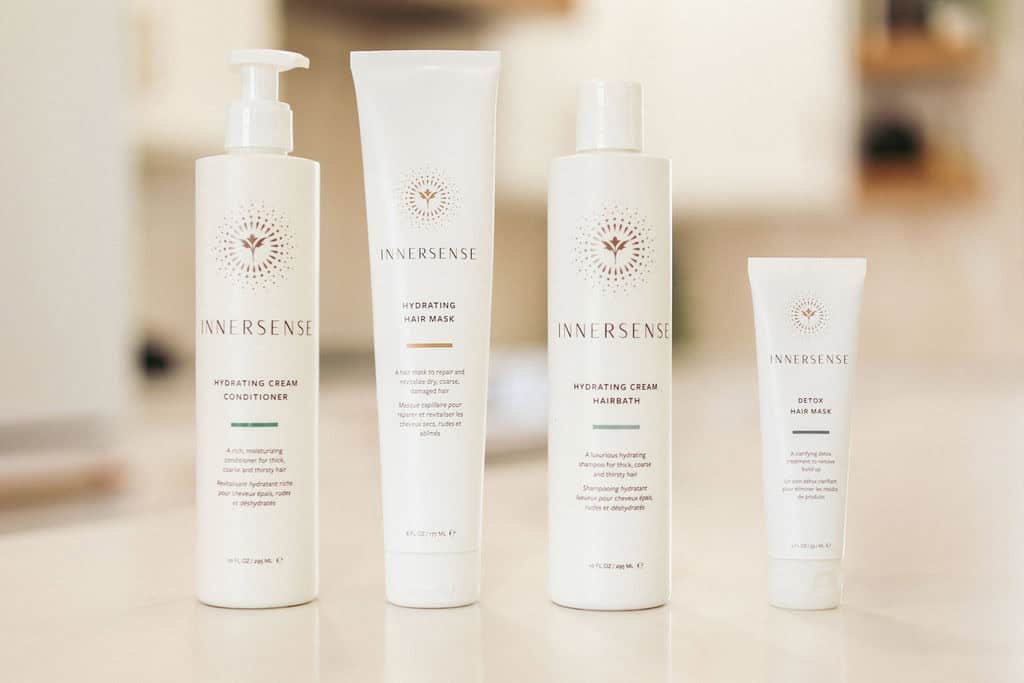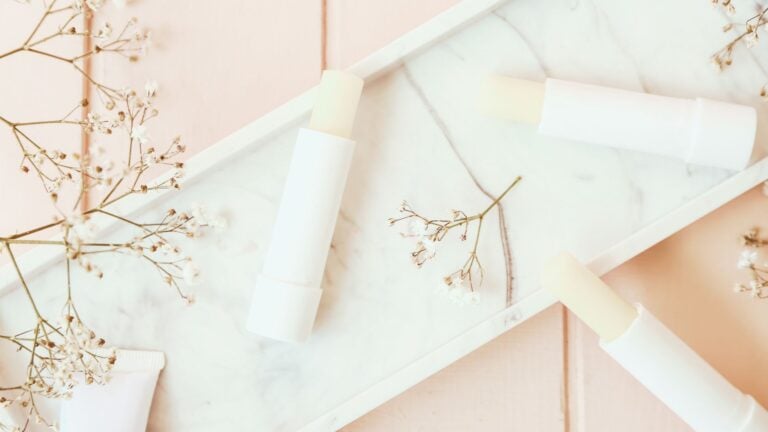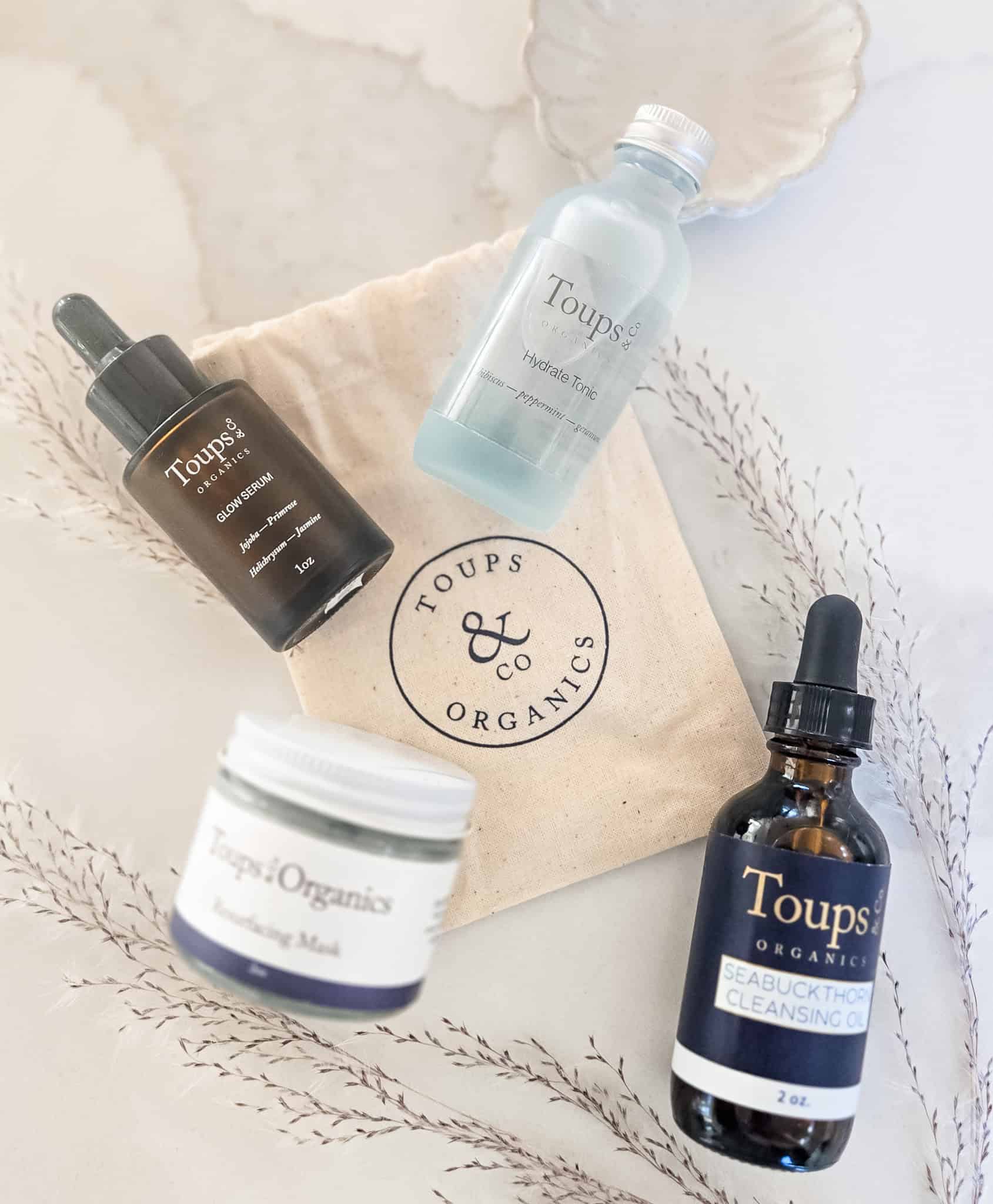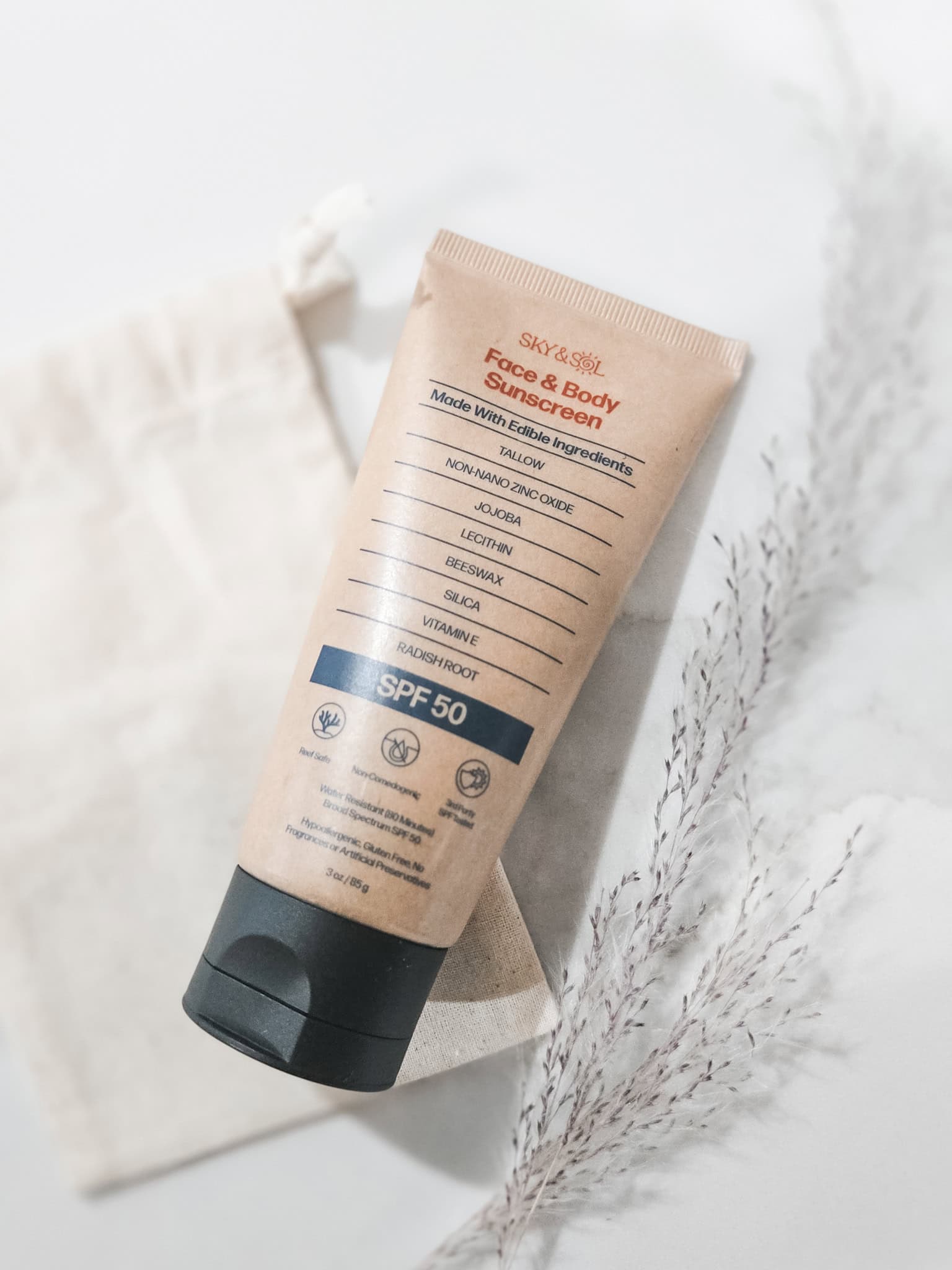The Ultimate Guide to Non-Toxic Personal Care Products
Beauty is more than skin deep—it’s a reflection of how we care for our bodies, inside and out. As women of faith, we are called to steward our health wisely, honoring the temple God has given us (1 Corinthians 6:19-20). Yet, so many of the personal care products we use daily—our shampoos, lotions, makeup, and deodorants—contain toxic chemicals that can harm our health over time.
It’s time to take back control and choose beauty products that nourish rather than harm. In this guide, we’ll explore the dangers of conventional personal care products, the benefits of switching to non-toxic alternatives, and how this simple change can align with a lifestyle of purity, wellness, and honoring God through healthy living.
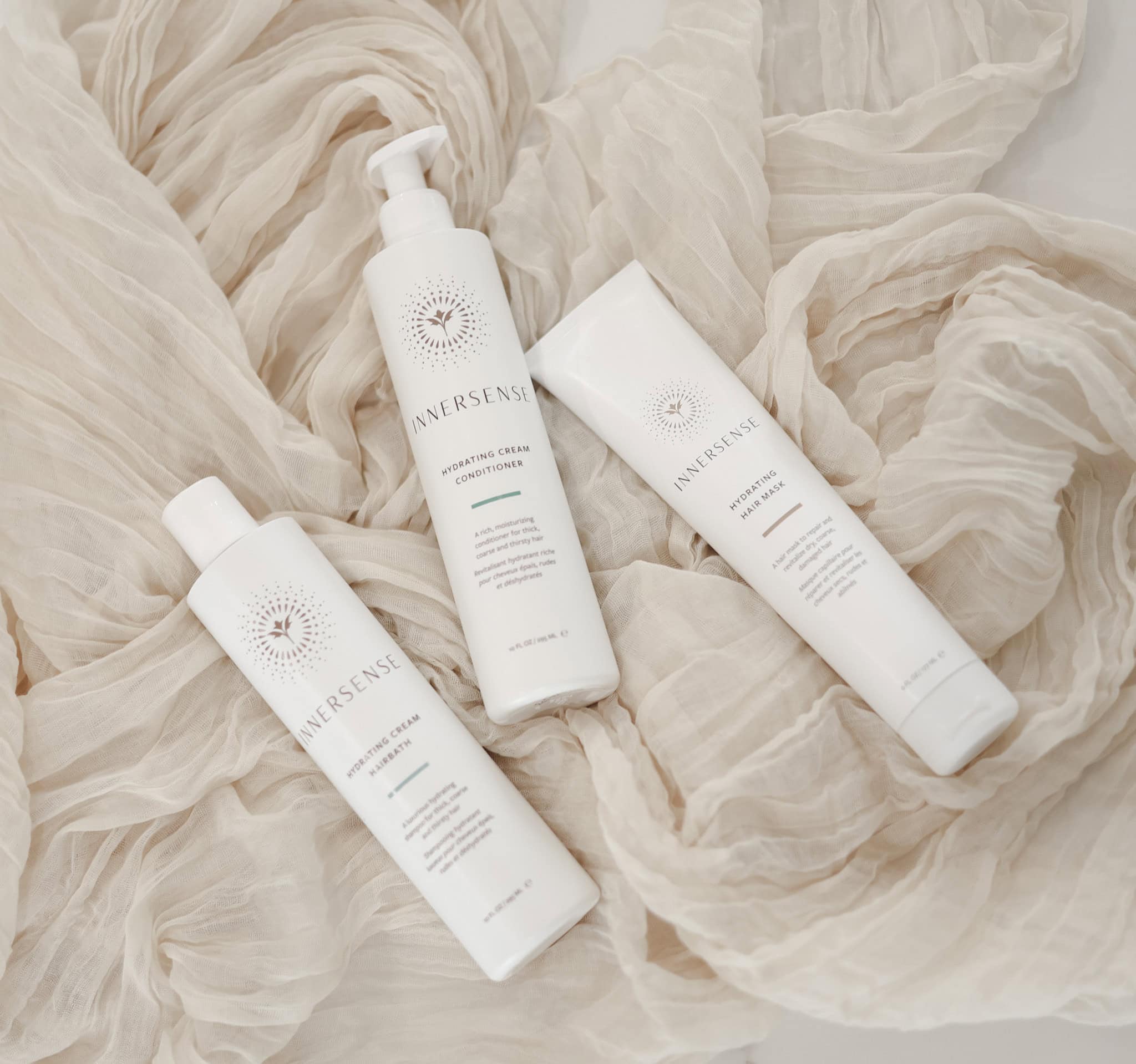
The Hidden Dangers in Your Daily Routine
Most women don’t realize that the beauty and personal care industry is largely unregulated. In the U.S., the FDA has banned or restricted only a fraction of the thousands of chemicals used in beauty and personal care products. Many of these chemicals have been linked to serious health concerns, including hormone disruption, fertility issues, skin irritations, and even cancer.
According to the Environmental Working Group, Congress last enacted cosmetic regulations in 1938. A lot has changed since then, but we have yet to see the U.S. catch up to other nations when it comes to its regulations. Safety is mainly left up to the cosmetic industry itself to regulate.
Some of the worst chemical offenders in our beauty products include:
- Parabens – Commonly found in shampoos, lotions, and makeup, these preservatives mimic estrogen in the body and have been linked to hormone imbalances and breast cancer.
- Phthalates – Used to make fragrances last longer, phthalates are known endocrine disruptors that can negatively impact reproductive health.
- Sulfates (SLS & SLES) – These foaming agents found in shampoos and soaps can strip the skin and scalp of natural oils, leading to irritation and increased absorption of other toxins.
- Formaldehyde-Releasing Agents – Often used as preservatives in hair products and nail polish, formaldehyde is a known carcinogen.
- Triclosan – A common antibacterial agent in soaps and toothpaste, triclosan has been linked to antibiotic resistance and hormone disruption.
When we unknowingly apply these toxins to our bodies every day, they absorb into our skin, enter our bloodstream, and build up over time. But the good news? There are safe, effective alternatives that help us glow from the inside out!
Join the HSIB Instagram Community
Making the Switch: Personal Care Products to Replace
Autoimmune issues jump-started my switch to the low-tox world. At the beginning of my low-tox journey, I started by journaling symptoms to find possible triggers. My ever-increasing sensitivities to smells and products forced me to make changes rather quickly, but I was relieved to see a difference in a very short period of time.
Switching to non-toxic personal care products doesn’t have to be overwhelming. Start small if you can—replace products as you finish them, one by one. Small changes can make a big difference! Here are the essential swaps to make for a cleaner, healthier beauty routine:

1. Shampoo & Conditioner
Your scalp is incredibly porous—second only to the underarms in its ability to absorb what you put on it. In fact, studies have shown that the skin can absorb up to 60% of topical ingredients, and the scalp, with its rich blood supply and hair follicles, is especially permeable.
Traditional hair products often contain sulfates, parabens, phthalates, and synthetic fragrances, which can penetrate the skin barrier and may disrupt hormone balance or contribute to irritation. Clean shampoos and conditioners skip those ingredients in favor of safer, more skin-compatible alternatives like aloe vera, rosemary and other herbs, and natural oils that support your scalp’s health without the chemical overload.
But the benefits go way beyond just avoiding the bad stuff. The scalp is an extension of your facial skin—it contains over 100,000 hair follicles and sebaceous glands, all working to maintain a healthy environment for hair growth. When you overload it with harsh ingredients, you risk disrupting its delicate microbiome, leading to dryness, inflammation, and even hair thinning.
Clean formulations help restore balance by supporting the scalp’s natural barrier and sebum production. Over time, this means stronger roots, less itchiness and scalp conditions (like flakiness), and healthier, more vibrant hair from root to tip.
Instead of traditional shampoos filled with sulfates and parabens, opt for natural, plant-based formulas that cleanse without stripping your hair’s natural moisture. Many brands now use gentle cleansers derived from coconut oil and botanical extracts to nourish your scalp and strands.
Our scalps are very porous, soaking in all of the things we put on our heads. We don’t need the chemicals to keep our hair clean. It may take a little getting used to truly natural products, but I promise you once you make the switch, the benefits of shiny, healthy hair and clear scalp are worth it!
My go to clean brand for shampoo and conditioner is Innersense Organic Beauty. There products are the cleanest on the market AND work amazingly! Shop Innersense Organic Shampoo and Conditioners Here.

2. Body Wash & Soap
Let’s talk about what you’re lathering on your skin every single day—because your soap and body wash aren’t just washing off dirt, they may also be leaving behind ingredients your body doesn’t love. Your skin absorbs a good portion of what you put on it, and since your body wash covers more surface area than almost any other product, it’s worth paying attention to what’s inside.
Traditional soaps often contain harsh sulfates (like SLS), synthetic fragrances, parabens, and preservatives that can strip your skin’s natural oils, disrupt its microbiome, and trigger irritation, especially for those with sensitive or reactive skin.
Clean soap and body wash formulas take a gentler, smarter approach. They’re made with skin-nourishing ingredients like organic oils, tallow, and plant-based surfactants that cleanse effectively without compromising your skin barrier. Many are pH-balanced to support the acid mantle (your skin’s protective layer), which helps lock in moisture and fend off irritation.
Plus, when you ditch synthetic fragrance in favor of essential oils or no scent at all, you reduce your exposure to hidden chemicals—many of which are linked to hormone disruption, allergic reactions, or autoimmune flare-ups. Clean body care isn’t just about being toxin-free—it’s about giving your skin the support it needs to stay balanced, hydrated, and truly healthy from head to toe.
We often don’t think about how the issues we have with our skin are directly affected by the ingredients in the things we lather all over it. Often, we just pick out what smells good or whichever pretty bottle grabs our attention. But what if the ingredients in that bottle are the direct link to your itchy skin or eczema?
Instead, we can use soaps and body washes that give us the benefits nature has to offer. Whether you prefer body wash or bar soap, there are so many clean options available. Why would you not choose a low-tox option instead?!

3. Deodorant
Your underarms are seriously absorbent. In fact, the skin in your armpits is thinner and more permeable than many other areas of the body, and because it’s usually warm and moist, absorption rates here can be higher.
Traditional antiperspirants often contain aluminum compounds that temporarily block your sweat glands, along with synthetic fragrances and preservatives that can irritate the skin or disrupt your endocrine system. Clean deodorants skip the aluminum and instead rely on naturally odor-neutralizing ingredients like baking soda, magnesium, and plant-based butters.
It’s like skincare for your pits—and your body will thank you for the upgrade.
Here’s the science-y beauty truth: sweating is one of your body’s natural detox mechanisms, and when you use products that block that function, it can lead to buildup and irritation over time. Clean deodorants allow your body to sweat (which is healthy!), while still keeping odor in check by targeting the bacteria that actually causes it.
Plus, when you switch, you’re giving your underarms a chance to rebalance their microbiome and reduce sensitivity from years of harsh ingredients. The transition might take a little patience, but once your skin adjusts, you’ll notice smoother, calmer underarms—and confidence that comes from knowing exactly what you’re putting on your skin.
Aluminum-based antiperspirants block sweat glands and have been linked to hormone disruption. A non-toxic deodorant with baking soda, magnesium, or arrowroot powder will help neutralize odor naturally without harmful chemicals.
I believe this is one of the best changes you can make for your health. Sweating through our armpits helps our bodies detoxify all the yuck. When we slide on an antiperspirant, we inhibit our body’s ability to detoxify.
Plus, if we are shaving our armpits, then directly applying chemicals with hormone disruptors, we are allowing those chemicals to seep in near our lymph nodes. Sweat should be drawing the toxins out of our armpits, not soaking them in.
I know this is a tough one to swallow, but there are great options on the market to keep the stinkiness at bay. Everyone’s body is different, and what works great for one may not for the next. You may have to test a few deodorants out before finding a good fit for your body.
Beware of marketing schemes when it comes to a truly non-toxic deodorant. Many on the market are advertised as natural or non-toxic but still contain unhealthy chemicals and fragarances which are loaded with hormone disruptors and a plethora of unknowns.
Stay away from anything with the word fragrance or perfume in the ingredients list unless it is essential oil-based fragrances. My go-to non-toxic deodorant options are Toups & Co. Organics and Primally Pure.
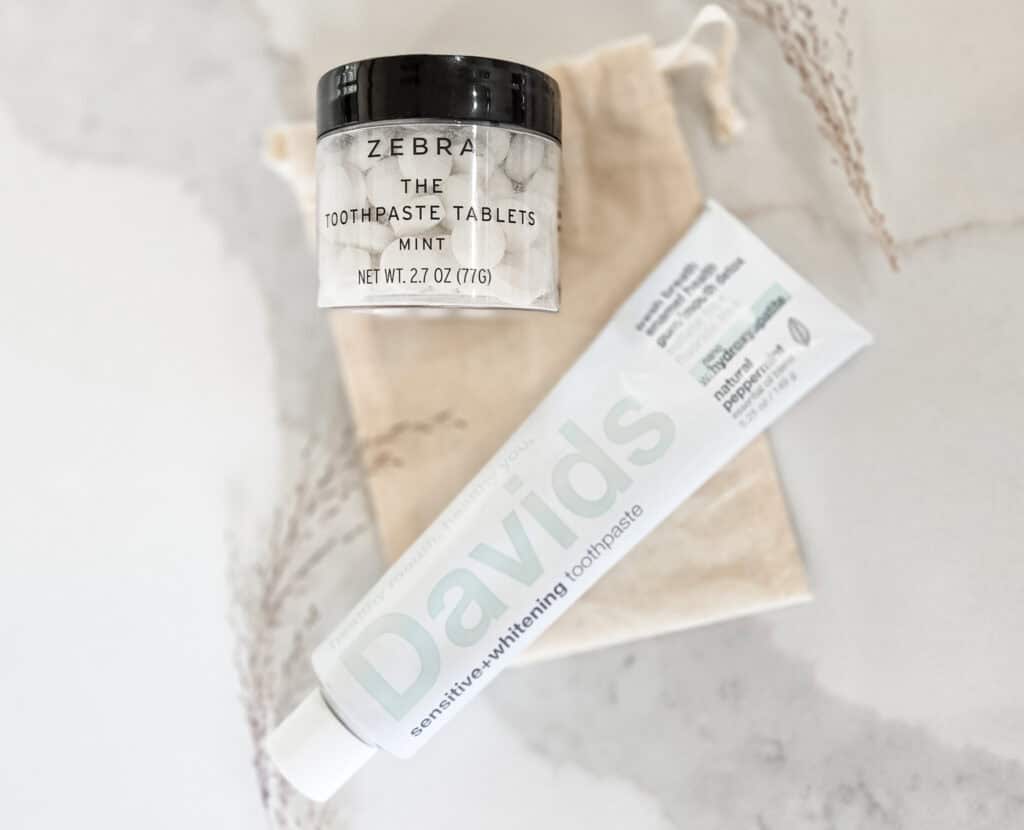
4. Toothpaste
Let’s talk about toothpaste—because what goes in your mouth matters just as much as what goes on your skin. Your mouth is one of the most absorbent parts of your body, lined with thin mucous membranes that allow ingredients to pass directly into your bloodstream. Traditional toothpastes often contain questionable ingredients like sodium lauryl sulfate (SLS), triclosan, artificial dyes, and synthetic sweeteners, which can irritate sensitive tissues or disrupt your oral microbiome.
Most mainstream toothpastes contain fluoride (a known neurotoxin), artificial sweeteners (linked to various health problems), and triclosan (an antibacterial agent that can cause antibiotic resistance). Safer options are not only available but equally effective without the toxins.
Clean toothpastes, on the other hand, use naturally derived ingredients like xylitol, baking soda, essential oils, and calcium-based minerals to clean, polish, and protect your teeth—without the chemical cloud. Oral health is deeply connected to your overall health, and the state of your gums and mouth can impact everything from inflammation levels to heart health.
Clean toothpaste helps support a balanced, thriving oral environment by avoiding harsh antibacterial agents that can strip away good bacteria. Many clean formulas also include remineralizing ingredients like hydroxyapatite—a safe, science-backed alternative to fluoride that helps strengthen enamel and reduce sensitivity.
So if you’re looking to upgrade your routine from something that just foams and freshens to something that truly nurtures your health, clean toothpaste is a smart, science-supported swap. Your mouth will feel the difference—and your body will too because what goes into the mouth also goes into the rest of your body🦷✨
Some great clean toothpaste options include: Zebra-The Toothpaste, Zebra-The Tablets, and Risewell Mineral Toothpaste, and Davids Toothpaste.
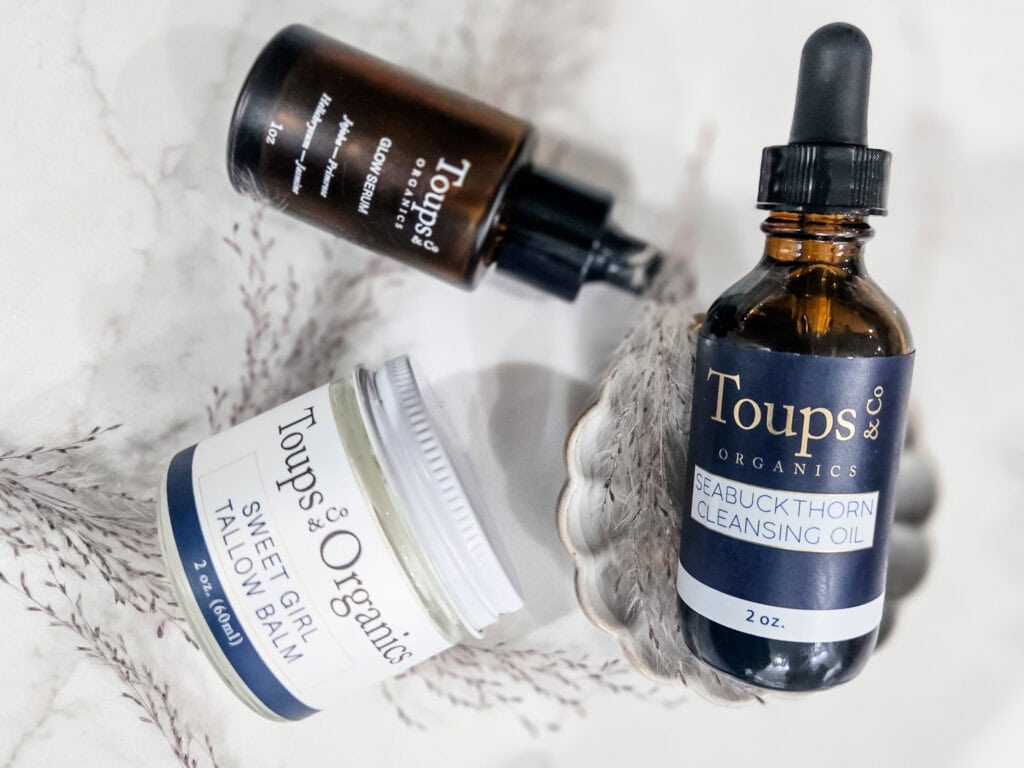
5. Skincare
Let’s start with cleansers. Traditional cleansers often rely on sulfates like sodium lauryl sulfate (SLS) or sodium laureth sulfate (SLES) to create that satisfying lather. While they’re effective at removing oil and dirt, they can also strip your skin’s natural lipids and disrupt its acid mantle, leading to dryness, irritation, and an overproduction of oil. Clean cleansers use milder surfactants derived from ingredients like coconut and often include hydrating ingredients like aloe vera to cleanse without compromising the skin barrier.
Next up is toner—a step that’s often misunderstood but can be incredibly beneficial when done right. Many conventional toners are alcohol-based, which can cause stinging and tightness, especially for sensitive or compromised skin. Over time, this can lead to dehydration and irritation. Clean toners, on the other hand, are formulated with soothing botanical waters, humectants, and pH-balancing ingredients that help restore the skin after cleansing. A balanced pH is essential for maintaining the skin’s natural microbiome and barrier function, which in turn supports immunity and reduces inflammation.
Moisturizers are where many people unknowingly introduce synthetic preservatives, silicones, and petrochemical-derived emollients into their routine. These ingredients may create a temporary feeling of smoothness or hydration but don’t nourish the skin long-term. Some can even clog pores or create a barrier that traps bacteria and sweat. Clean moisturizers prioritize skin-identical ingredients like ceramides, squalane, tallow, and plant oils rich in omega fatty acids. These not only moisturize but help repair and reinforce the skin’s lipid barrier, which is critical for those of us dealing with autoimmune conditions or chronic skin sensitivity.
When it comes to masks, clean options can be especially powerful because they sit on the skin longer and are more concentrated. Many traditional masks contain synthetic dyes and fragrances, PEG compounds, or even formaldehyde-releasing preservatives. Clean masks often use ingredients like kaolin clay or activated charcoal to purify, while delivering beneficial nutrients through ingredients like honey, green tea extract, or vitamin C. These formulations support cell turnover, reduce oxidative stress, and calm inflammation—without overwhelming your system with toxic byproducts.
Each of these products plays a unique role in your skincare routine, but together they create a synergistic effect. When you switch to clean, low-tox options across the board, you’re not just avoiding harmful chemicals—you’re actively feeding your skin with ingredients it can recognize, process, and benefit from. For me, transitioning each product slowly and intentionally helped me understand what my skin actually needed, and I finally began to see true, lasting results. Clean skincare isn’t about having fewer steps—it’s about making every step count.
My go-to clean skincare brand is Toups & Co. Organics. Toups is the original in the tallow game, and takes every ingredient used in their products very seriously. Toups is a small family-owned company made right here in the U.S. Read the Toups & Co. mission and shop skincare products here.
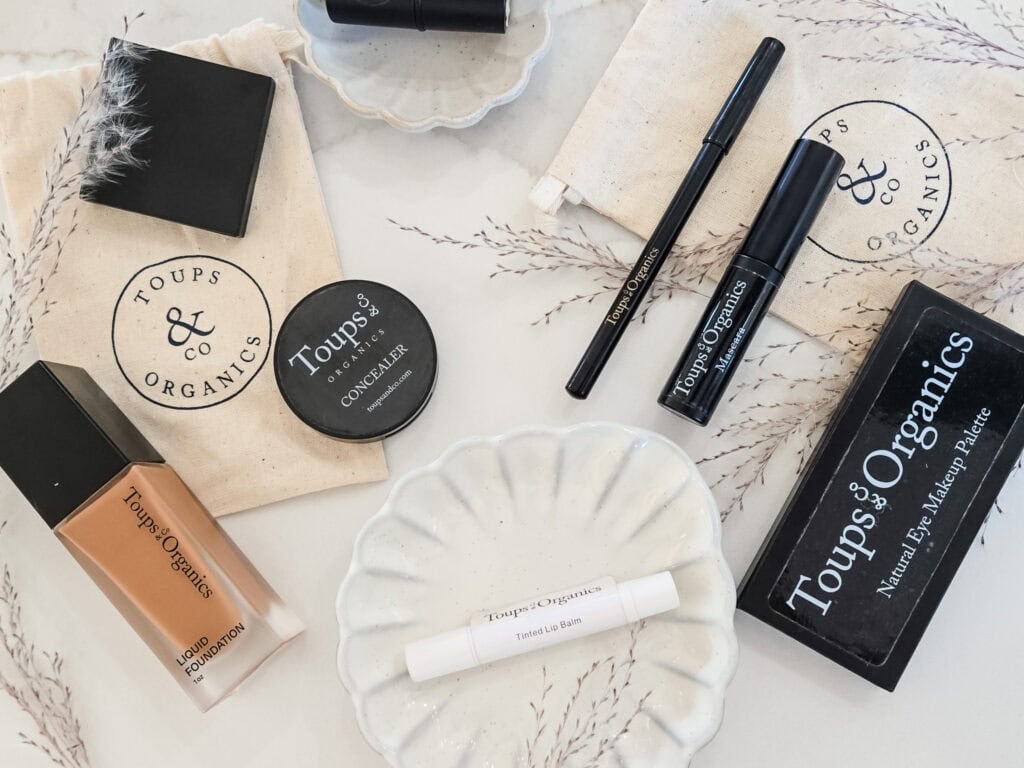
6. Makeup
Research shows that certain ingredients in conventional makeup, such as parabens (used as preservatives), can penetrate the skin barrier and have been detected in blood and urine samples. These compounds have been linked to potential endocrine disruption, meaning they may interfere with your body’s natural hormone function. And it’s not just parabens—traditional makeup can also contain phthalates (commonly found in synthetic fragrances), PFAS (a group of “forever chemicals” sometimes used in long-wear formulas), and heavy metals like lead in trace amounts, particularly in lipsticks.
Clean makeup offers a safer, science-backed alternative. Instead of relying on potentially harmful synthetic ingredients, clean formulations use mineral pigments (like iron oxides and mica), plant-based emollients, and skin-nourishing actives such as jojoba oil, squalane, and vitamin E. These ingredients not only provide beautiful wear and performance, but they also support your skin barrier—helping to reduce inflammation, prevent clogged pores, and even improve long-term skin texture and resilience.
Some clean foundations and concealers are now formulated with non-nano zinc oxide or titanium dioxide for safe, natural sun protection, while others include probiotics and peptides to actively support your skin’s microbiome and elasticity.
Your makeup sits on your face for 8+ hours a day—so why not make sure it’s actually doing something good for your skin while it’s there? Clean makeup is designed to be breathable, non-comedogenic, and free of the harsh additives that can lead to breakouts, sensitivity, or dullness over time.
I have fallen in love with Toups & Co. Makeup. I love the way it makes my skin look and feel. From foundation to eyeshadow to the silkiest cream blush ever, the natural ingredients shine through and enhance your natural beauty in the best way! Whether I am running out the door and need just a simple day look or am glamming it up for a fancy dinner out, Toups brings such a simple versatility that I adore❤️

7. Sunscreen
Sunscreen is one of the most important steps in any skincare routine, but not all sunscreens are created equal. For years, I used conventional SPF products without a second thought. But once I began my low-tox journey and started researching ingredients, I realized many sunscreens contain chemical filters that can do more harm than good, especially for people with autoimmune conditions or sensitive skin.
Ingredients like oxybenzone, octinoxate, homosalate, and avobenzone are commonly used in chemical sunscreens to absorb UV rays—but several of these have been shown to penetrate the skin and enter the bloodstream, where they may interfere with hormone function and contribute to systemic inflammation.
Clean sunscreens, on the other hand, use mineral (physical) filters like non-nano zinc oxide and titanium dioxide. These ingredients sit on top of the skin and reflect UV rays rather than absorbing them, making them gentler and less likely to cause irritation or allergic reactions.
Zinc oxide, in particular, is not only broad-spectrum (blocking both UVA and UVB rays) but also has natural anti-inflammatory properties—making it a great choice for sensitive or reactive skin. Non-nano formulations are key here, because they ensure the particles are too large to be absorbed into the bloodstream, offering protection without internal exposure.
Beyond the active ingredients, it’s also important to look at what else is in your sunscreen. Many conventional options include synthetic fragrances, parabens, PEGs, and preservatives like methylisothiazolinone—compounds that can irritate the skin or disrupt the skin barrier over time. Clean sunscreens skip these in favor of nourishing bases made from ingredients like aloe vera, sunflower seed oil, squalane, and green tea extract. These not only improve the texture and wear of the product but also help hydrate and calm the skin while you protect it from sun damage.
Another benefit of clean sunscreens? They tend to be reef-safe and environmentally conscious—meaning they avoid ingredients like oxybenzone and octinoxate, which have been shown to damage coral reefs and marine life.
While your main concern might be personal health, knowing that your sunscreen choice also aligns with environmental wellness is an added bonus. Many clean brands are now creating lightweight, sheer, and non-greasy formulas that rival conventional SPFs in both feel and performance—so you don’t have to sacrifice texture or finish for safety.
Be cautious when purchasing “clean” sunscreen. A lot of companies make holistic claims on the packaging while still containing harmful ingredients. The proof is on the back of the package. Make sure to flip it over and read those ingredients! My tried and tested go-to brands are Toups & Co. Organics Sun Balm and Sun Stick, and Sky and Sol.
Learn more about natural sunscreens HERE.
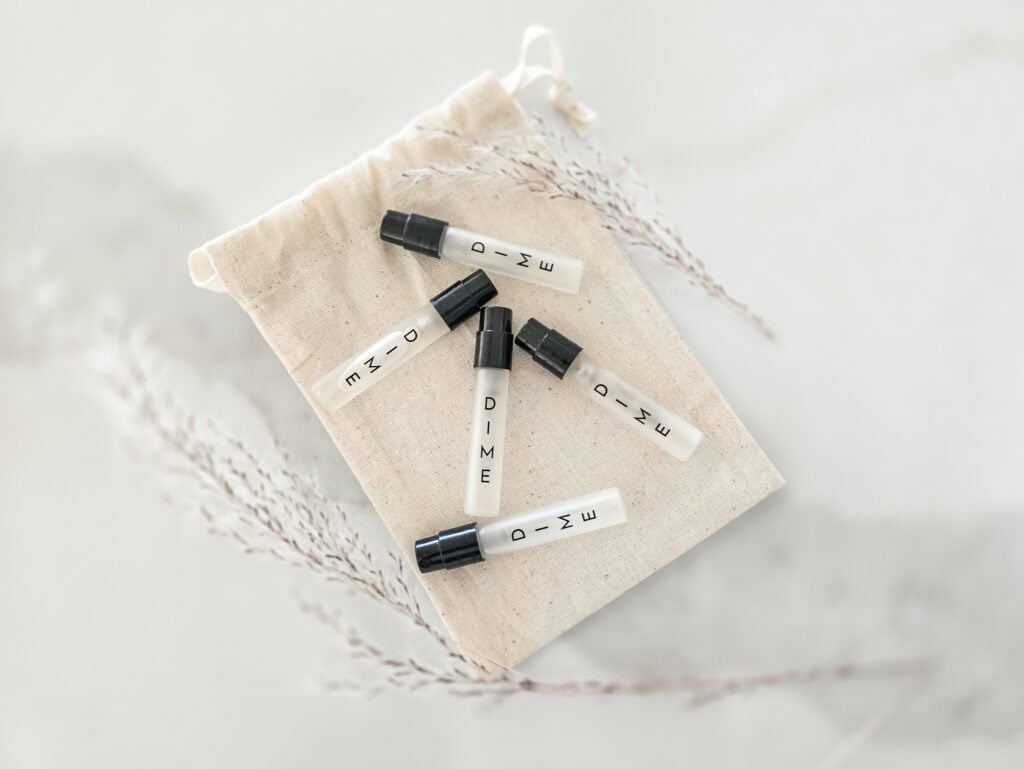
8. Perfume
Perfumes really have one purpose: to make us smell good. Traditional perfumes might smell divine, but many are made with a cocktail of synthetic fragrances, phthalates, and undisclosed “fragrance” blends—a loophole that allows dozens (sometimes hundreds) of chemical ingredients to be hidden under one word.
Your skin, especially pulse points like your neck and wrists, is highly absorbent, and what you spritz there doesn’t just stay on the surface. It can be absorbed into your bloodstream and linger in your system. Clean perfumes skip the mystery chemicals and instead use essential oils and natural extracts to create beautiful, complex scents—without compromising your health.
Here’s the science: synthetic fragrance compounds have been linked to hormone disruption, skin sensitivities, and even headaches or respiratory irritation. When you choose clean perfume, you’re not only avoiding those risks—you’re treating your body to a more mindful experience.
I will be honest, clean perfumes are hard to find and often are not that low-toxic. If you are looking for the safest non-toxic option, opt for essential oils. Another great option is to opt for a lovely, scented body oil or moisturizer, or body mist like Primally Pure’s Everything Spray. If you are hoping for an authentic perfume, Dime Beauty offers a variety of clean perfumes made with organic ingredients and is truly the cleanest on the market today.

9. Styling Products
Many conventional styling products—like mousses, hairsprays, gels, and texturizers—contain ingredients that are not only inhaled during use but can also be absorbed through the scalp (remember, one of the most porous areas on the body). The result? Constant, low-level exposure to hormone-disrupting, allergy-triggering, and potentially inflammatory chemicals.
Some of the most common offenders in traditional styling products include phthalates (often hidden under the word “fragrance”), formaldehyde-releasing preservatives (like DMDM hydantoin and quaternium-15), silicones, and polyethylene glycols (PEGs).
These can build up on the scalp and hair shaft, leading to irritation, flaking, clogged follicles, and even hair thinning over time. Worse, many of these ingredients act as endocrine disruptors, meaning they may interfere with your hormone balance—something I had to take seriously as someone managing autoimmune symptoms.
Clean styling products take a different approach. Instead of synthetic polymers and harsh preservatives, they use plant-based hold agents (like flaxseed extract or sugar cane resin), naturally derived texturizers, and safer preservatives such as potassium sorbate.
More recent posts
Many also include nourishing ingredients like aloe vera, shea butter, rice protein, and essential oils to add hydration, volume, and shine, without coating your hair in a film of synthetic buildup. Once I made the switch, I noticed not just a difference in how my hair felt, but also how my scalp behaved: fewer flakes, less itching, and a lot more balance.
The great news is that clean hair styling products have come a long way. You no longer have to choose between performance and safety—there are fantastic clean brands offering volumizing sprays, soft-hold gels, curl creams, and even natural texture pastes that rival any traditional product. And without the aerosol propellants or chemical-heavy fumes, the air around you stays cleaner too. This can be especially important for people who experience scent sensitivity, headaches, or histamine responses triggered by synthetic fragrances and vapors.
Clean hair styling is about more than just “going natural”—it’s about protecting the long-term health of your scalp, hair, and body. If you’ve already started making low-tox swaps in your routine, don’t overlook what you’re using to style your hair each day.
These products often stay on the scalp for hours—or even overnight—and what you apply consistently matters. Swapping to clean styling products helped reduce the daily chemical load on my body, and honestly, my hair has never looked or felt healthier.
My absolute favorite clean hair care product brand is Innersense Organic Beauty. Innersense combines the power of natural ingredients with incredible performance. With over twenty years in the beauty industry, I have tried A LOT of products, and Innersense beats out the traditional professional (and chemical-filled) brands any day!

10. Lotion
Body lotion is one of those everyday essentials most of us don’t think twice about—but it should be one of the first products we examine on a low-tox journey. Why? Because body lotion covers a lot of surface area. That means whatever is in it gets absorbed across large portions of your skin—and your skin, especially when warm after a shower, is highly porous and receptive.
Many drugstore and department store lotions rely on a cocktail of petroleum-based ingredients, synthetic fragrances, parabens, and preservatives like BHT or DMDM hydantoin (a formaldehyde releaser). These can contribute to skin barrier disruption, hormone imbalance, and even immune irritation over time—especially for those of us with autoimmune conditions or skin sensitivities.
Synthetic fragrance alone can include hundreds of undisclosed chemicals, some of which are known allergens or endocrine disruptors. Using these daily means exposing your body to a steady stream of unnecessary chemicals.
When I transitioned to clean body lotions, I immediately noticed a difference—not just in how my skin felt, but in how my body responded. Clean lotions focus on nourishing, whole ingredients like tallow, coconut oil, olive oil, and plant-based extracts that hydrate without harming.
These products often use natural preservatives like radish root ferment or rosemary extract, and any scent comes from therapeutic-grade essential oils—not artificial fragrance blends. The result? Skin that feels hydrated, calm, and truly cared for.
Beyond comfort, clean body lotions actually support your skin’s function. Your skin isn’t just a barrier—it’s an active organ involved in immune signaling, detoxification, and hormonal processes. When we feed it with ingredients that are biocompatible and non-disruptive, it can do its job better. For me, clean lotion became more than a beauty product—it became part of my wellness routine. I now view moisturizing as an act of health care, not just self-care.
Switching to a clean body lotion is a simple, powerful change. It’s one of those daily habits where you get consistent exposure—so it makes a huge difference in your overall toxic load. If you’re on a low-tox path or managing health sensitivities, don’t overlook your lotion. Choose products that work with your skin, not against it. Your body, your immune system, and your future self will thank you.
My favorite skin nourishing lotions and balms are Innersense Renew Body Lotion, Innersense Blissful Body Butter, and Toups & Co. Organics Tallow Balm.
Why Clean Beauty Matters
Our bodies are wonderfully designed by God, and what we put on them matters. By choosing non-toxic personal care products, we:
- Support Hormonal Balance – Avoiding endocrine disruptors helps keep our hormones stable, which is essential for reproductive health, mood balance, and overall well-being.
- Protect Future Generations – Many toxins in personal care products can pass through the placenta during pregnancy, affecting unborn children. Making the switch benefits not only us but also our families.
- Reduce the Risk of Chronic Illness – Studies have linked long-term exposure to certain beauty chemicals to cancer, infertility, and autoimmune diseases. Choosing safer products minimizes these risks.
- Honor God with Our Choices – Living a non-toxic lifestyle reflects biblical stewardship. Proverbs 31:25 describes a woman of faith as being clothed in strength and dignity—choosing purity in our beauty routine aligns with this calling and God’s definition of beauty.
When we care well for our bodies and choose life-giving ingredients, we are stronger mentally, physically, and spiritually. I know we don’t often equate our beauty products with our faith, but when our bodies are burdened by ailments, sickness, and disease, it often affects our ability to think clearly and connect spiritually. Don’t let the little things, like beauty products, be a barrier to a strong body, mind, and spirit.
Practical Steps to Transition to Non-Toxic Beauty
If switching everything at once feels daunting, take it step by step:
- Start with the products you use daily – Deodorant, toothpaste, and face products are a great place to begin.
- Do your research – Check labels and use resources like the Environmental Working Group’s (EWG) Skin Deep database to verify product safety.
- Look for third-party certifications – Seals like USDA Organic, EWG Verified, and Leaping Bunny ensure higher safety standards.
- Embrace simplicity – Sometimes, fewer ingredients are better. Opt for products with clean, recognizable components.
- Pray for wisdom – Ask God to guide you in making the best choices for your health and family.
A Beautiful Life, Inside and Out
True beauty is not just about what we put on our skin—it’s about how we nourish our souls, love others, and care for the bodies God has given us. By making intentional choices with our personal care products, we cultivate both inner and outer beauty, reflecting the light of Christ in all we do.
Are you ready to detox your beauty routine? Start today by swapping out one toxic product for a non-toxic alternative. Your body will thank you, and you’ll be taking a step toward a healthier, God-honoring lifestyle!
What’s the first product you’ll switch? Share your journey in the comments!
Hey, Sweet Friend!
Welcome! I’m Ashley, a lover of beauty in all its facets. I am a hairstylist, writer, & girl mom passionate about helping women flourish by seeking beauty beyond the surface. I love to encourage women to create clean & healthy beauty habits & homes grounded in faith and live by my motto…clean, pretty, + simple. I would love for you to join me in your healthy beauty journey!
Sources:
- Environmental Working Group: The Toxic Twelve Chemicals and Contaminants Found in Cosmetics
- Toups & Co. Organics: Why Toups
- Zebra: About Us
- Primally Pure Skincare
- Environmental Working Group
